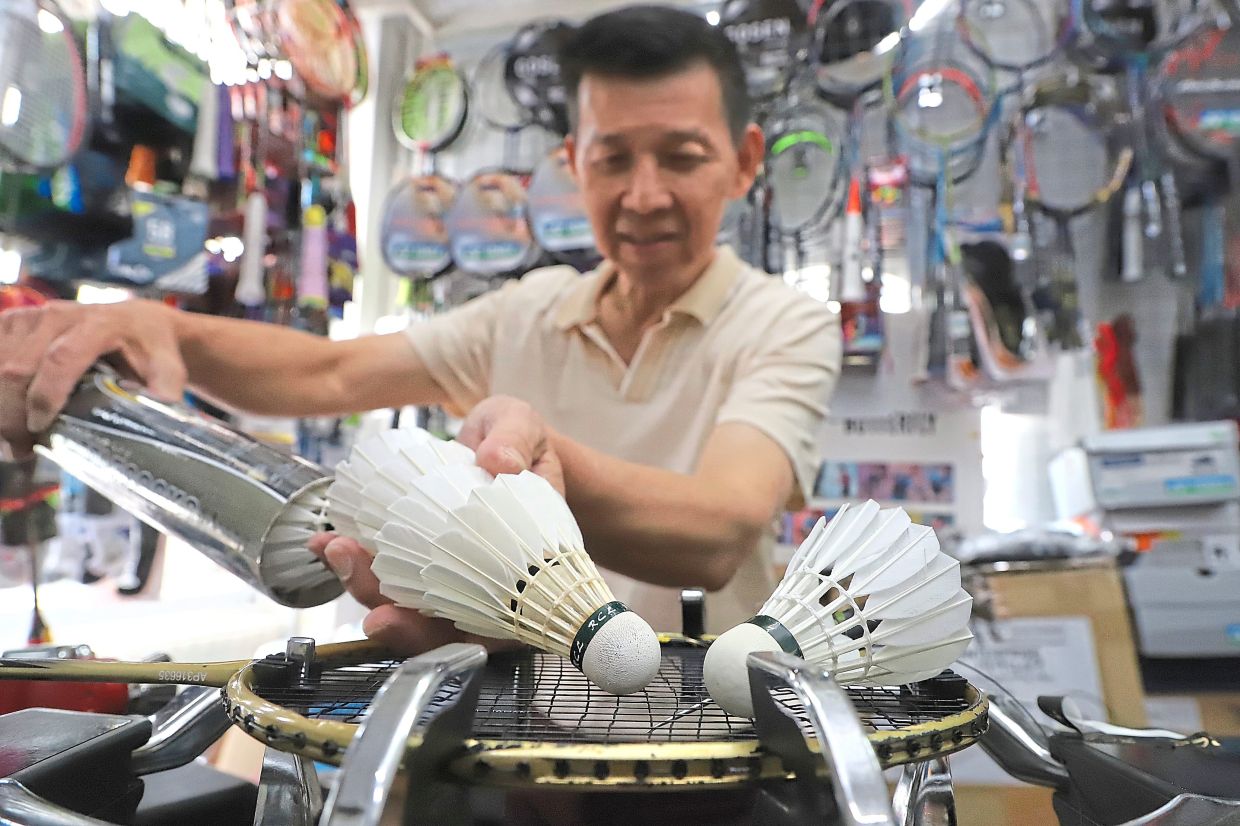The love of badminton in Malaysia may be strong, but the sport is becoming increasingly expensive, with a looming price hike for shuttlecocks set to hit players hard.
Loh Eng Swee, a racquet shop owner in Bukit Dumbar, has warned that a tube of shuttlecocks could see a 10% to 20% price increase. This follows a recent hike in June, which saw popular brands rise to RM87 per dozen from RM76.
"Just last month, we saw a price increase of between RM7 and RM11 for a tube of shuttlecocks across different brands," explained Loh. "Shuttlecocks of famous brands, which used to cost RM105 per tube, are now priced at RM120. We're expecting another price increase with our new stock next month, and the branded ones will likely be even more expensive."
With the anticipated price hike, some players have even begun stockpiling, with Loh noting customers purchasing up to 20 tubes. However, he advises against this, as shuttlecocks have a lifespan of only two years before they deteriorate. He also revealed that racquets are expected to see a 10% to 15% increase in price in the coming months, primarily attributed to the weaker ringgit.
Datuk Kah Kau Kiak, President of the Penang Badminton Association, expressed concern over the rising cost of the sport, stating that "playing badminton is now expensive." He highlights that while Malaysia will see a 10% to 20% increase in shuttlecock prices, other countries like Taiwan and China will experience a 30% rise, and India a staggering 40% increase.
Kah advises casual players not to compromise on the quality of shuttlecocks, as a good shuttlecock is durable and accurate, while a poorly made one is likely to break easily. He suggests a tube of shuttlecocks costing RM80 should be sufficient.
Neoh, a dedicated badminton player, highlighted the impact of these rising prices on individual players. "If the price of shuttlecocks goes up, each player will have to pay an extra RM2 to RM3 per session," he said. "We usually have between six and eight players in a two-hour session, and we easily use up a tube of shuttlecocks costing around RM100. Imagine playing three times a week; after a few months, we also have to restring our racquets and get new shoes. It's getting expensive."
Numerous news reports point towards the recent price hike in badminton shuttlecocks, primarily produced in China, being linked to the falling cost of pork. The decline in pork prices has led to increased consumer demand and fewer farmers interested in raising ducks and geese, driving up the cost of feathers used in shuttlecocks. Additionally, major brands have informed distributors that shuttlecock prices will rise due to increased production costs.
This price hike presents a challenge for badminton players in Malaysia, who are facing a double whammy of rising prices for both equipment and court rentals. As the cost of playing badminton continues to increase, players will need to make tough decisions about how to manage their budget and stay involved in the sport they love.
Article
Sports

Badminton Prices Soar: Feather Shortage Hits Players' Wallets

